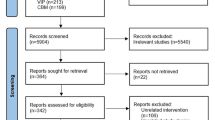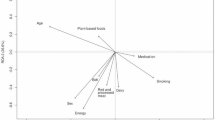Abstract
Background: Undernutrition is a common problem in older individuals that may be related to a low protein dietary intake. Oral supplements may improve the health status in this population, but their use may be limited by compliance and side effects.Objectives To evaluate effects of an oral supplement of protein and fibre on compliance, on nutritional status, and on intestinal habits in nursing home residents.Method: A prospective observational study was carried out in 66 Spanish nursing homes. 358 subjects undernourished or at risk of undernutrition requiring nutritional supplements. After informed consent was given, subjects received 2 daily cartons (400 ml) of a liquid oral supplement rich in protein and fibre along 3 months. Supplement intake compliance was measured at baseline and after 6 and 12 weeks. Nutritional status was assessed using the Mini-Nutritional Assessment (MNA), weight, and Body Mass Index (BMI). Changes in intestinal habits and digestive symptoms were also recorded, as well as subject’s supplement acceptance.Results: Compliance with the supplement intake was 97.46% at 6 weeks and 96% at 12 weeks of follow-up. Significant changes (p<0.0001) were found in nutritional status: mean value of MNA improved from baseline (MNA=14.0±3.9) after 12 weeks (MNA=17.0±4.0), as well as weight (+2.1 kg, a 4.1% increase). The BMI did not change significantly (BMI=21.43 at baseline; BMI= 21.78 at 12 weeks). Undernutrition prevalence (MNA<17) decreased from 76.4 to 46.6% (p<0.0001). Intestinal habits showed a significant improvement in defecation frequency (from 4.7 to 6.1 stools per week, p<0.0001) and faeces consistency (from 53.2% to 74.5% reporting formed soft stools, p<0.0001). 48.9% of the subjects considered to have better intestinal habits after 6 weeks and 50.5% after 3 months of supplementary food intake, the rest reporting no change. Vomits and flatulence were also significantly reduced (p<0.0001). Conclusion: The administration of an oral hyperproteic supplement with fibre in aged subjects who are undernourished or at risk of malnutrition can be done in nursing homes with a high level of compliance. Supplements improve their nutritional status and their intestinal habits.
Similar content being viewed by others
References
Payette H, Gray-Donald K, Cyr R, Boutier V. Predictors of dietary intake in a functionally dependent elderly population in the community. Am J Public Health, 1995; 85(5):677–83.
Chapman IM. Nutritional disorders in the elderly. Med Clin North Am, 2006 Sep; 90 (5):887–907.
Garcia-Lorda P, Foz M, Salas-Salvado J. Prevalencia de malnutrición en la población anciana española. Med Clin (Barc), 2002, May 18; 118 (18):707–15.
Pauly L, Stehle P, Volkert D. Nutritional situation of elderly nursing home residents. Z Gerontol Geriatr, 2007 Feb; 40 (1):3–12.
National Collaborating Centre for Acute Care, February 2006. Nutrition support in adults. Oral nutrition support, enteral tube feeding and parenteral nutrition. National Collaborating Centre for Acute Care, London. Available from www.rcseng.ac.uk
Person JM, Schlettwein-Gsell D, Brzozowska A, van Staveren WA, Bjornsbo K. Life style characteristics associated with nutritional risk in elderly subjects aged 80–85 years. J Nutr Health Aging, 2001; 5(4):278–283.
Vetta F, Ronzoni S, Taglieri G, Bollea MR. The impact of malnutrition on the quality of life in the elderly. Clin Nutr, 1999; 18(5):259–67.
Montero N. Dietas enriquecidas y suplementos nutricionales en ancianos hospitalizados. Revista española de Geriatría y Gerontología, 2003; 38(4): 226–236.
Milne AC, Potter J, Avenell A. Protein and energy supplementation in elderly people at risk from malnutrition. Cochrane Database Syst Rev, 2005, Issue 1. Art. No.: CD003288.pub2. DOI:10.1002/14651858.
Volkert D, Berner YN, Berry E, Cederholm T, Coti Bertrand P, Milne A, et al. ESPEN Guidelines on Enteral Nutrition: Geriatrics. Clin Nutr, 2006; 25, 330–360.
Cederholm T. Treatment of protein-energy malnutrition in chronic disorders in the elderly. Minerva Gastroenterol Dietol, 2002, Sep; 48 (3):247–63.
Milne AC, Avenell A, Potter J. Meta-analysis: protein and energy supplementation in older people. Ann Intern Med., 2006, Jan 3; 144 (1):37–48.
Product description: http://www.pfrimmer-nutricia.de/cms/de/produkte/applikationstechnik.php?ppnr=30010300 =Rm9ydGltZWwgQ29tcGxldGU=
Guigoz Y, Vellas B, Garry PJ. Mini Nutritional Assessment: a practical assessment tool for grading the nutritional state of elderly patients. Facts Res Gerontology, 1994; (Suppl 2): 15–59.
Kondrup J, Allison SP, Elia M, Vellas B, Plauth M. ESPEN Guidelines for Nutrition Screening 2002. Clin Nutr, 2003; 22(4): 415–421.
Lauque S, Arnaud-Battandier F, Mansourian R, Guigoz Y, Paintin M, Nourhashemi F, Vellas B. Protein-energy oral supplementation in malnourished nursing-home residents.
Gray-Donald K, Payette H, Boutier V. Randomized clinical trial of nutritional supplementation shows little effect on functional status among free-living frail elderly. J Nutr, 1995, Dec; 125 (12):2965–71.
Lawson RM, Doshi MK, Ingoe LE, Colligan JM, Barton JR, Cobden I. Compliance of orthopaedic patients with postoperative oral nutritional supplementation. Clin Nutr, 2000; 19:171–175.
Hogarth MB, Marshall P, Lovat LB, Palmer CG, Frost AE, Fletcher CG et al. Nutritional supplementation in elderly medical in-patients: a double-blind placebocontrolled trial. Age Ageing, 1996; 25:453–457.
Ramos A, Asensio A, Núñez S, Millán I. Prevalencia y factores asociados a malnutrición en ancianos hospitalizados. An Med Interna, 2004; 21:263–268.
Lauque S, Arnaud-Battandier F, Gillette S, Plaze JM, Andrieu S, Cantet C, Vellas B. Improvement of weight and fat-free mass with oral nutritional supplementation in patients with Alzheimer’s disease at risk of malnutrition: a prospective randomised study. J Am Geriatr Soc, 2004; 52(10):1.702–1.707.
Vandewoude MFJ, Paridaens KMJ, Suy RAL, Boone MAA, Strobbe H. Fibresupplemented tube feeding in the hospitalised elderly. Age Ageing, 2005; 34(2):120–124.
Author information
Authors and Affiliations
Rights and permissions
About this article
Cite this article
Cruz-jentoft, A.J., Calvo, J.J., Durán, J.C. et al. Compliance with an oral hyperproteic supplement with fibre in nursing home residents. J Nutr Health Aging 12, 669–673 (2008). https://doi.org/10.1007/BF03008280
Received:
Accepted:
Issue Date:
DOI: https://doi.org/10.1007/BF03008280




